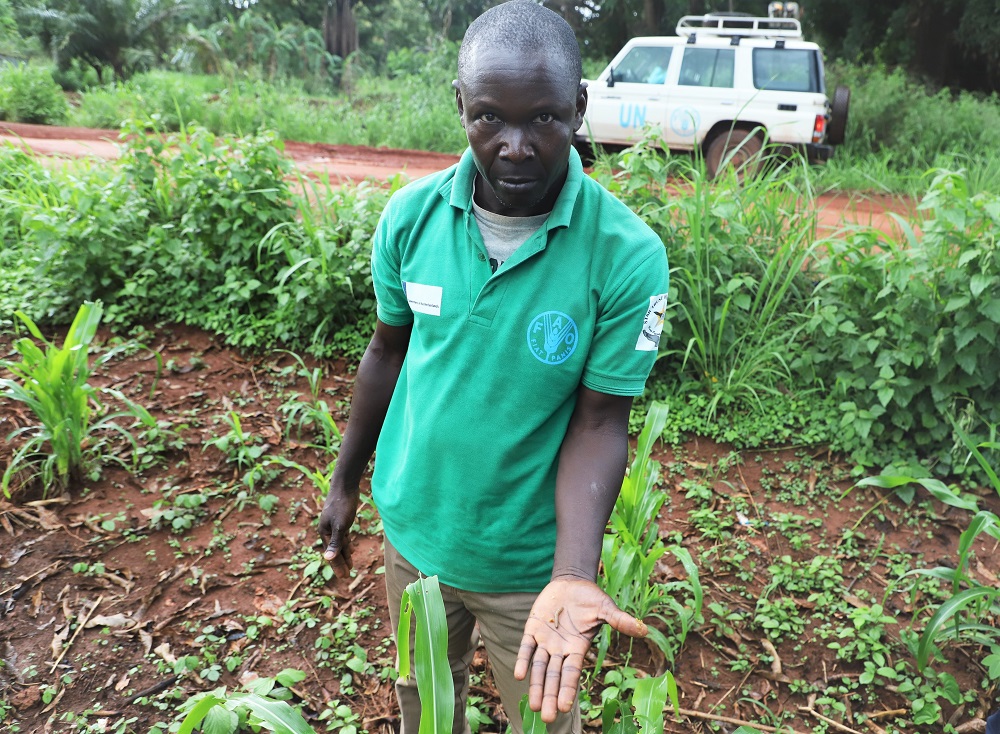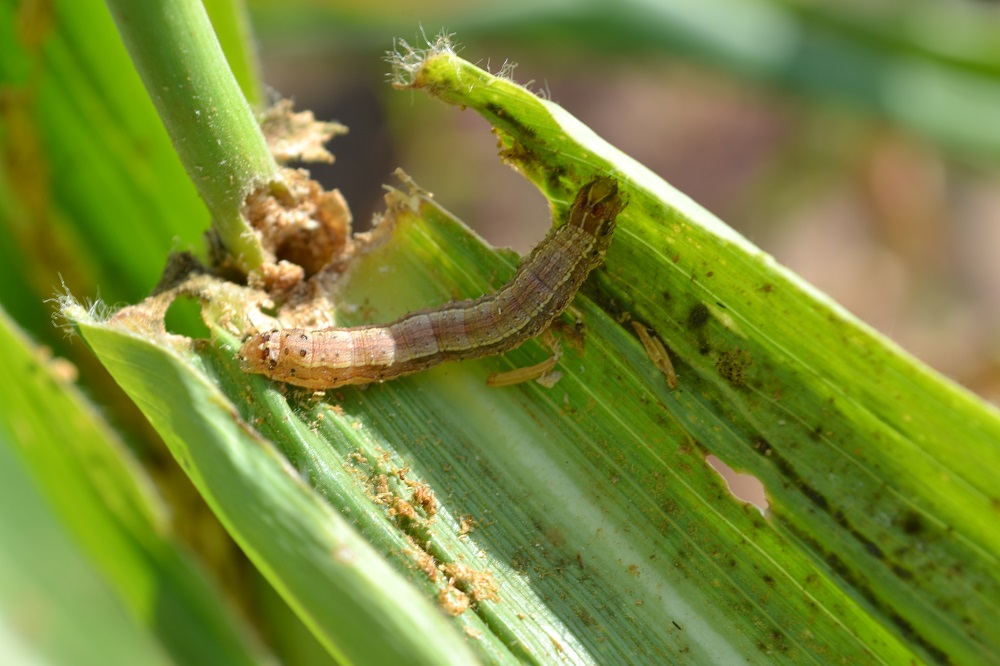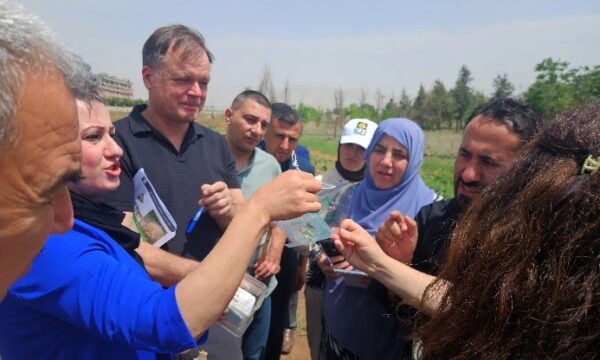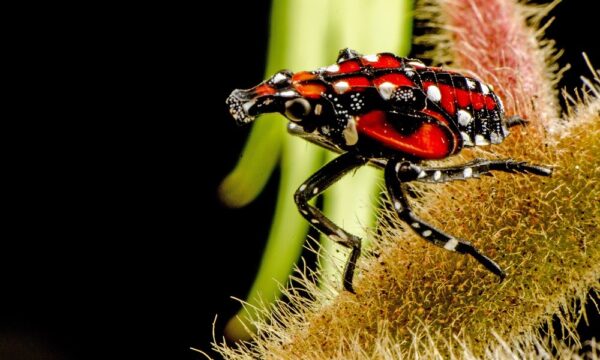
A new study looking at the potential distribution of the devastating fall armyworm in Africa and beyond with emphasis on the influence of climate change and irrigation patterns has drawn upon previous research and expertise from CABI.
The paper, by researchers from The Pennsylvania State University and the International Centre of Insect Physiology and Ecology (icipe), references two CABI evidence notes on the impact of fall armyworm (Spodoptera frugiperda) and its implications for Africa as well as two scientific papers – either led by or co-authored by CABI scientists – considering the monitoring and spread of the crop pest. See ‘Additional information’ below for full details
Fall armyworm invasion
The latest research, led by Penn State’s Dr Bipana Paudel Timilsena and icipe’s Dr Sevgan Subramanian and published in the journal Scientific Reports, sought to assess the global fall armyworm invasion threat – emphasizing the risk of transient and permanent population establishment in Africa under current and projected future climates while also considering irrigation patterns.
It is suggested that fall armyworm – which is native to the Americas but has invaded and spread throughout sub-Saharan Africa within the last four years – can establish itself in almost all countries in eastern and central Africa and a large part of western Africa under the current climate.
Climate change impact
Researchers argue that climatic barriers, such as heat and dry stresses, may curb the distribution of fall armyworm to North and South Africa. The scientists believe that the re-parameterizing of existing CLIMEX modelling has allowed them to project that the pest’s invasive range will retract from both northern and southern regions towards the equator.
But the scientists say that a large area in eastern and central African will have the optimal climate for fall armyworm persistence. They believe that these areas will serve as fall armyworm ‘hotspots’ from where it may migrate to the north and south during favourable seasons and then pose an economic threat.

A recent paper by Eschen et al, published in the journal CABI Agriculture and Bioscience, for instance, estimates that the fall armyworm in Africa is responsible for annual yield losses of USD $9.4 billion.
Projection of distribution crucial
The scientists in the paper state that, “The fall armyworm poses a considerable threat to farmers worldwide. Projection of the pest distribution and its potential to establish in a targeted geographical location is crucial in enhancing preparedness, particularly selecting appropriate pest management control.
“Under current climatic conditions, fall armyworm has not yet reached all areas where it could potentially establish year-round populations, and therefore also not all areas that it can occasionally or seasonally invade.
“Under projected global temperature increases, the optimal areas for fall armyworm persistence will shrink and, with them, the areas of seasonal invasions. Our model does not consider the multitudes of biotic interactions.
“However, it appears that at least the distribution of maize, fall armyworm’s preferred host plant, follows a similar pattern, which means that under future climatic conditions successful cultivation of maize will require successful management of fall armyworm populations.”
Additional information
Main photo: An extension worker from the Food and Agriculture Organization of the United Nations (FAO) with finds fall armyworm in a maize crop (Credit: CABI).
Full paper reference
Paudel Timilsena, B., Niassy, S., Kimathi, E. et al. Potential distribution of fall armyworm in Africa and beyond, considering climate change and irrigation patterns. Sci Rep 12, 539 (2022). https://doi.org/10.1038/s41598-021-04369-3
CABI references in above paper
Rwomushana, I. et al. Fall armyworm: impacts and implications for Africa. Evidence note update. (Center for Agriculture and Bioscience International-CABI, 2018).
Abrahams, P. et al. Fall armyworm: impacts and implications for Africa. Evidence note (2). (Center for Agriculture and Bioscience International-CABI, Sept 2017).
Cock, M. J. W., Beseh, P. K., Buddie, A. G., Cafá, G. & Crozier, J. Molecular methods to detect Spodoptera frugiperda in Ghana, and implications for monitoring the spread of invasive species in developing countries. Sci. Rep. 7, 4103 (2017).
Early, R., González-Moreno, P., Murphy, S. T. & Day, R. Forecasting the global extent of invasion of the cereal pest Spodoptera frugiperda, the fall armyworm. NeoBiota 40, 25–50 (2018).
Related News & Blogs
Biological control in action: Zambia’s field days on fighting fall armyworm
Experts from CABI recently held two field days and an expo in Zambia, showcasing innovative approaches to pest management to 584 farmers, agro-dealers and other stakeholders to help raise awareness of approaches to tackle the invasive fall armyworm (Sp…
11 June 2025




